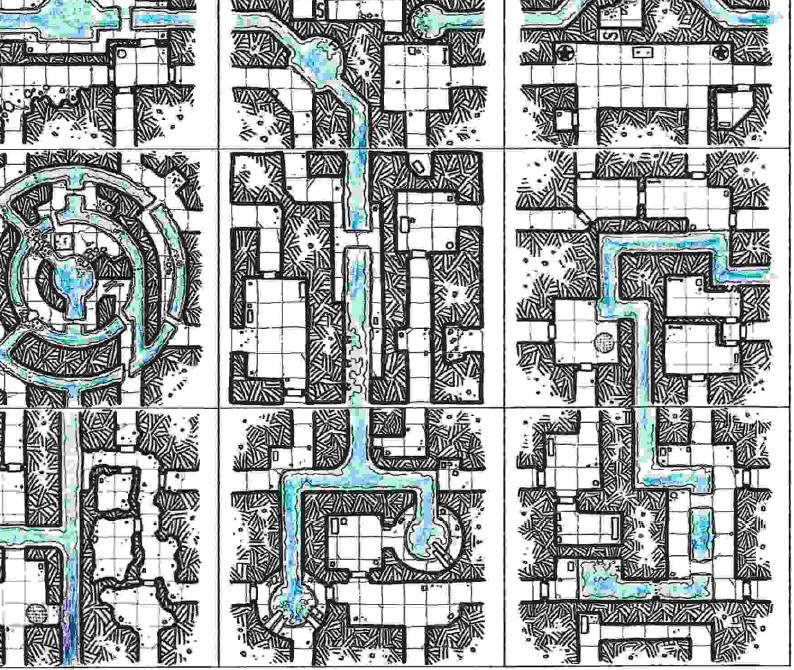Last August, Alan Barclay visited us during his tour of several nordic regions, and we found time to play some things, including Electric Bastionland. This was played before Kristoffer proceeded to get the full version of the game and play it with others, as we discussed in the conversation posted as Sewer madness.
Despite the common element of the Below (i.e., sewers), this was a totally different game, a single session GMed by me, using only the free preview version at the publisher’s website. The players (in the order of the characters in the file below) included Daniel, Helma, Alan, Johan, and Kristoffer.
The map is made from sewer geomorphs drawn by Dyson Logos, from my well-stocked folder with his name on it. If you’d like to follow along in play, they began in the room just about in the center of the square in the rightmost column, center row. The circle is the grate in the ceiling. The pile of time-ish disks that they were seeking is located at the star in the square above that one.
As it happened, there was a logistic hassle at Spelens Hus that week, so we played at Daniel’s apartment. I don’t include personal dwellings in my recordings so we stayed with audio only.
In the final audio file, I mentioned that I wanted to write about things that were provided / things that I provided, for this game. It’s the same topic which Kristoffer developed in our conversation, but here, I was working with a much less detailed text and I think the process is made clearer, or seemed very stark to me at the time.
Briefly: that nothing the texxt provided was finished, and simultaneously, nothing I provided was entirely external. Whatever I read, I could develop, and whatever I felt like adding, seemed to prompt specific textual material or related concepts. Now, I suggest that this interplay is very common and always available in playing games with inspiring texts, but I also suggest it’s an underdeveloped skill, worth pursuing.

